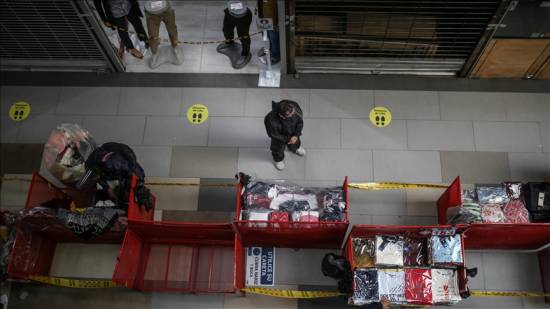Latin America and the Caribbean face a bumpy road to economic recovery from the deep scars left by the coronavirus pandemic.
The labor markets in the region regressed at least 10 years, according to the International Labour Organization, reaching unemployment levels as high as 14.6% or 15.9% in countries with previously strong economies, such as Brazil and Colombia.
Unemployment rose 2.5% compared to the previous year, going from 8.1% to 10.6%, meaning that the number unemployed reached 30 million.
Poverty reached levels unseen in years in the region, with more than 16 million people having fallen into conditions of extreme poverty in 2020 due to the pandemic, totaling more than 83 million people, according to the Economic Commission for Latin America and the Caribbean (ECLAC).
Although the IMF forecasts that Latin America’s economy will grow 4.1% in 2021 - higher than the 3.6% it predicted last October - it does not compensate for the 9.4% that the region's economy shrank during 2020 due to the pandemic, compared to the 3% contraction projected for emerging economies by the organization. It is estimated that the region will return to previous income levels around the year 2023.
Latin America is one of the worst-affected regions due to the pandemic. With only 8% of the world population, the region accounts for 19% of the COVID-19 cases and about 27% of deaths, based on Johns Hopkins University data. Economic growth has been strongly impacted by lockdowns implemented by all countries, from Mexico to Argentina.
However, as countries began to loosen the measures during the second half of 2020, the economy has started to partially recover.
“The economies of Latin America and the Caribbean began to reverse the initial economic devastation left by the impacts of COVID-19, especially in the second quarter of 2020,” said Alejandro Werner, the IMF’s Western Hemisphere Department director, during a press conference on the fund’s economic outlook for the region in February.
However, the IMF emphasized that Latin America and Caribbean economies will only bounce back from devastation caused by COVID-19 if there is a major reduction in coronavirus infections.
“The resurgence of the pandemic at the end of last year and at the beginning of 2021 threatens to frustrate an already uneven recovery and to aggravate the enormous social and human costs that are being experienced,” Werner added.
An example of the uneven recovery can be seen in the split by country of the average 4.1% growth that the IMF expects for the region for 2021. In fact, the World Bank's projections show ten countries with an above average expected growth and 16 with an expected growth below the 4.1% average growth of the region.
The first group includes nations such as Peru, which will grow 7.6% after a 12.0% contraction in 2020, Argentina will grow 4.9% after a 10.6% contraction in 2020 and Colombia, which will grow 4.9% after a 7.5 percent contraction last year.
The countries that are expected to grow below the 4.1% average growth include Bolivia, which will grow 3.9% after a 6.7% contraction in 2020, Mexico will grow 3.7% after a 9% contraction, and Brazil will grow 3% after a 4.5% contraction in 2020. Other countries are forecasted to continue the negative trend of growth during 2021, such as Nicaragua and Surinam.
The recovery will depend, to a large extent, on how efficient countries are in distributing and administering the vaccine, Werner said. And so far, vaccination in Latin American has not taken real impulse./aa


